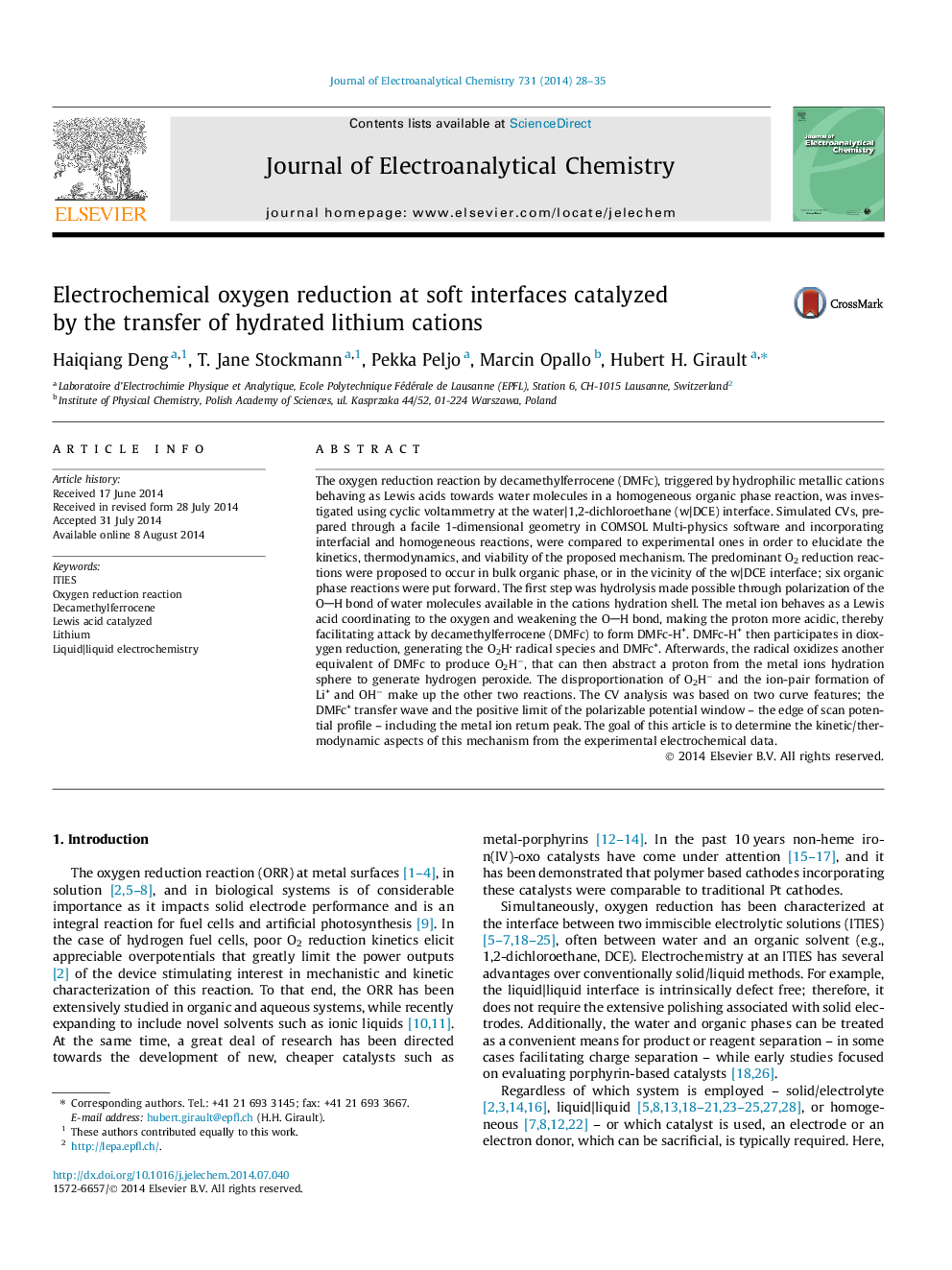| کد مقاله | کد نشریه | سال انتشار | مقاله انگلیسی | نسخه تمام متن |
|---|---|---|---|---|
| 218669 | 463212 | 2014 | 8 صفحه PDF | دانلود رایگان |
• Thermodynamic/kinetic study of ORR at a w|DCE interface using ferrocene derivatives.
• Experimental and simulated CVs compared to establish feasibility of the mechanism.
• Li+ transfer, aq. to org., along with its hydration shell and behaves as a Lewis acid.
• Three ferrocene derivatives compared with changing methyl substitution on Cp rings.
• Offers approach towards investigating Lewis acid catalytic activity.
The oxygen reduction reaction by decamethylferrocene (DMFc), triggered by hydrophilic metallic cations behaving as Lewis acids towards water molecules in a homogeneous organic phase reaction, was investigated using cyclic voltammetry at the water|1,2-dichloroethane (w|DCE) interface. Simulated CVs, prepared through a facile 1-dimensional geometry in COMSOL Multi-physics software and incorporating interfacial and homogeneous reactions, were compared to experimental ones in order to elucidate the kinetics, thermodynamics, and viability of the proposed mechanism. The predominant O2 reduction reactions were proposed to occur in bulk organic phase, or in the vicinity of the w|DCE interface; six organic phase reactions were put forward. The first step was hydrolysis made possible through polarization of the OH bond of water molecules available in the cations hydration shell. The metal ion behaves as a Lewis acid coordinating to the oxygen and weakening the OH bond, making the proton more acidic, thereby facilitating attack by decamethylferrocene (DMFc) to form DMFc-H+. DMFc-H+ then participates in dioxygen reduction, generating the O2H radical species and DMFc+. Afterwards, the radical oxidizes another equivalent of DMFc to produce O2H−, that can then abstract a proton from the metal ions hydration sphere to generate hydrogen peroxide. The disproportionation of O2H− and the ion-pair formation of Li+ and OH− make up the other two reactions. The CV analysis was based on two curve features; the DMFc+ transfer wave and the positive limit of the polarizable potential window – the edge of scan potential profile – including the metal ion return peak. The goal of this article is to determine the kinetic/thermodynamic aspects of this mechanism from the experimental electrochemical data.
Figure optionsDownload as PowerPoint slide
Journal: Journal of Electroanalytical Chemistry - Volume 731, 1 October 2014, Pages 28–35
